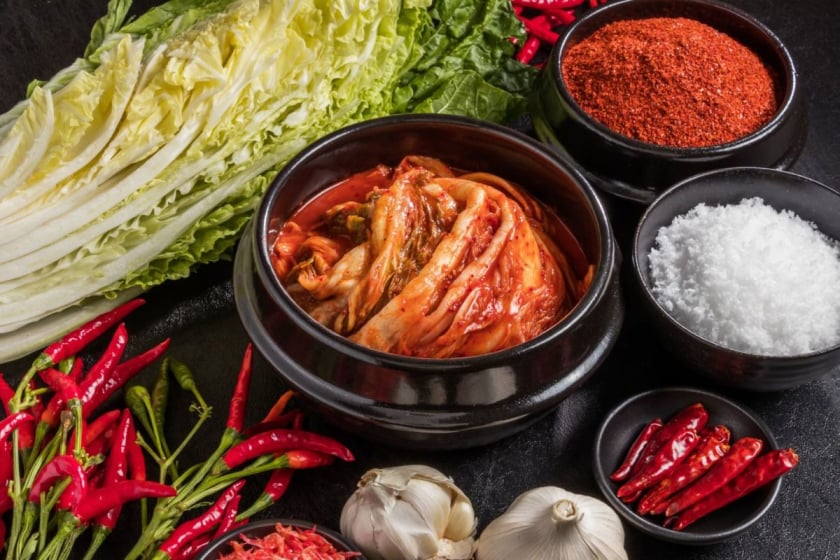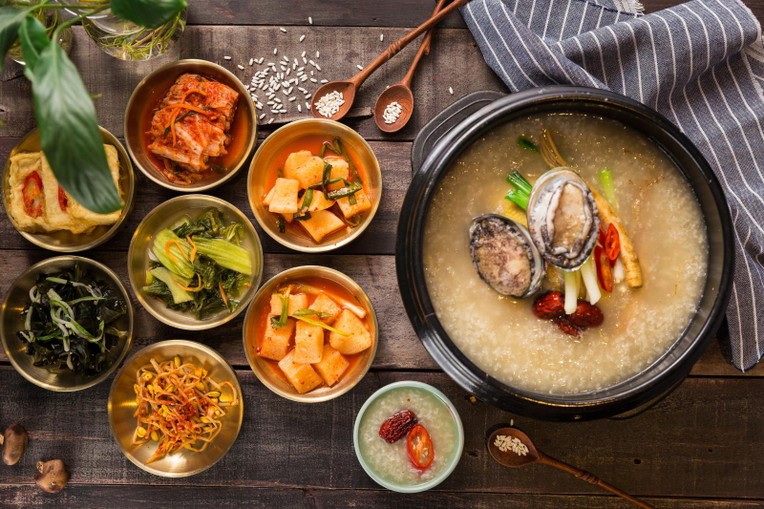The Five Elements Philosophy in Korean Cuisine
Since ancient times, Koreans have studied food very carefully. For them, food is not only a daily meal but also health, happiness and especially healing.
The Korean culinary art is very fond of and focuses on the Yin and Yang - Five Elements, so their dishes also apply this very clearly. They believe that a meal must have 5 elements: metal, wood, water, fire, earth - each element has a different symbolic meaning. More specifically, it is: ensuring the harmony of Yin and Yang in food; ensuring the balance of Yin and Yang in the body and ensuring the balance of Yin and Yang between humans and the natural environment.

Koreans pay great attention to meals.
In addition, the people here believe that delicious food is not a delicacy but must be good for health. For example, kimchi is made only from vegetables but there are dozens, hundreds of different types to ensure the health of the eater is improved.
Five elements in Korean daily meals
The five elements include: metal, wood, water, fire, and earth. The complete combination of the five elements in cuisine not only helps to harmonize yin and yang but also helps to balance all things.
Simply put, when you are sick, it means that the yin and yang are out of balance. The meal will be supplemented with dishes corresponding to the "element" that the body is lacking, thereby curing the disease caused by the dishes. In the human body, the five elements represent the five main organs: kidney, liver, heart, stomach and lungs, all of which are essential for survival.

Kimchi is an indispensable side dish in Korean family meals. It is considered the "national" dish that made the name of this country.
The best way to create balance in the body is to eat a variety of foods that correspond to the five tastes: salty, sour, bitter, sweet, and spicy.
Water foods: salty and dark foods, purple, black or blue foods. Foods in this group include black beans, black sesame, black rice, seaweed, wood ear mushrooms, etc. These foods promote moisture and soothe the body as well as improve kidney and bladder function.
Wood foods: sour and green foods. Green foods are usually cucumbers, zucchini, green onions, asparagus, cabbage... and fruits. These foods are good for the liver and intestines.

Gimbap is a traditional dish of Korean people.
Fire foods: foods that are usually spicy and red in color. In addition, lamb, venison, dandelion and watercress, tomatoes, citrus peels, apricots, plums, raspberries, strawberries, peppers, hot peppers, black pepper, wine, beer, coffee, tea, dark chocolate and carbonated drinks are foods that represent fire. These foods can reduce heat and dry fluids. This food is suitable for overweight people, has the effect of enriching blood, promoting better blood circulation.
Earth foods: sweet and starchy foods, especially yellow and orange foods. Also, beef, barley, pumpkin, sweet potatoes, soybeans, eggs and other tropical fruits. These foods slow down acute symptoms and neutralize toxins, help the pancreas and stomach function properly and stimulate appetite.

Abalone porridge - a nutritious Korean dish
Metal foods: white foods. White is related to lung function, so people often eat white radish, bellflower root, and soybean sprouts to prevent colds. In addition, this color also includes other foods such as rice (a staple in Korean meals), onions, garlic, potatoes, lotus root, etc. These foods have the effect of dispersing and promoting energy circulation.
According to Korean beliefs, if a dish has all five elements, it will not only be delicious, ensuring the amount of nutrients for the body, but also bring health benefits to people. Dishes that follow the philosophy of the five elements are also believed to have a full convergence of water, fire, wood, metal and earth. Thanks to that, people can absorb the essence of heaven and earth, permeating into the body after eating.

Mixed rice dish combines black color from beef, red color from chili and carrot, green color from vegetables and cucumber, white color from rice, and finally yellow color from egg.
Korean cuisine is strongly influenced by the five elements, especially the famous dishes of the land of kimchi. A typical example is rice rolls, which follow the five-color philosophy including black from seaweed, red from carrots, green from cucumbers, white from rice and yellow from eggs. A dish with strong traditional and symbolic meaning is even more meaningful.
Korea is a country that blends tradition and modernity. If you are a fan of Korean cuisine, eating based on the five elements will give you an interesting experience of the cuisine in this kimchi land.



































